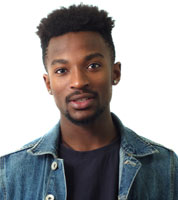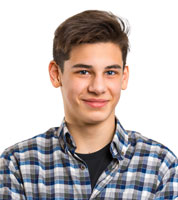Case Studies: Future Planning
Table of Contents
The vision and future plan description for all case studies reflects an individualized view based on the student and family desires, as well as the Age Appropriate Transition Assessment data. While these descriptions are lengthier than what may appear on an IEP, these types of visions can assist a team to better understand what is a priority to the student and family and provides a direction for the outcomes of the educational program.

Robert
Robert’s future planning and vision was developed and refined as he neared age 14. “Robert would like to develop his automotive skills to be able to make simple repairs on cars and work at least part-time in a small car shop. Within several years after graduation, he would like to live in an apartment close to people that he knows and can trust. He wants to continue to grow and learn new skills as an adult by taking adult education classes in areas of interest. He also wants to be able to regularly go to the movies, swim year-round and go shopping.”

Antonio
Antonio has been thinking about life after high school for many years. He is anxious to move into an adult world where he believes his intelligence will be respected by his college professors. “Antonio is committed to attending a university to study math or chemistry following graduation from high school. He plans to pursue a career in a field such as chemical engineering where he could work in the field of aerospace engineering, plastics and polymer manufacturing or pharmaceuticals. At college he would like to live in a dorm in a private room. He would like to connect with a social circle of a few friends that who similar interests. Following college, he hopes to locate employment that is within several hours from his family home, although he plans to live in his own apartment.”

Carla
Carla’s family helped the IEP team craft a vision that they knew reflected what made Carla happy and fulfilled. “Carla and her family want her to have the opportunity to do meaningful work in their local community, with the necessary supports. This work needs to be in a structured and predictable setting, but does not have to be the same every day. She will do best in settings that allow her to move frequently, will allow her to use her hands, involve music and have limited interactions with an ever-changing customer base. Carla will live in the family home immediately after high school. However, the vision is for Carla to move to a supported residential setting that suits her needs in terms of personal space, trained support staff, structure, daily leisure activities and access to the community. This move will need to occur soon after high school as the family is concerned they will not be able to offer the necessary support in the family home for Carla as an adult. Carla will continue to learn new skills as an adult. She will need on-the-job training in her employment and individual instruction to learn new daily living and leisure skills.”